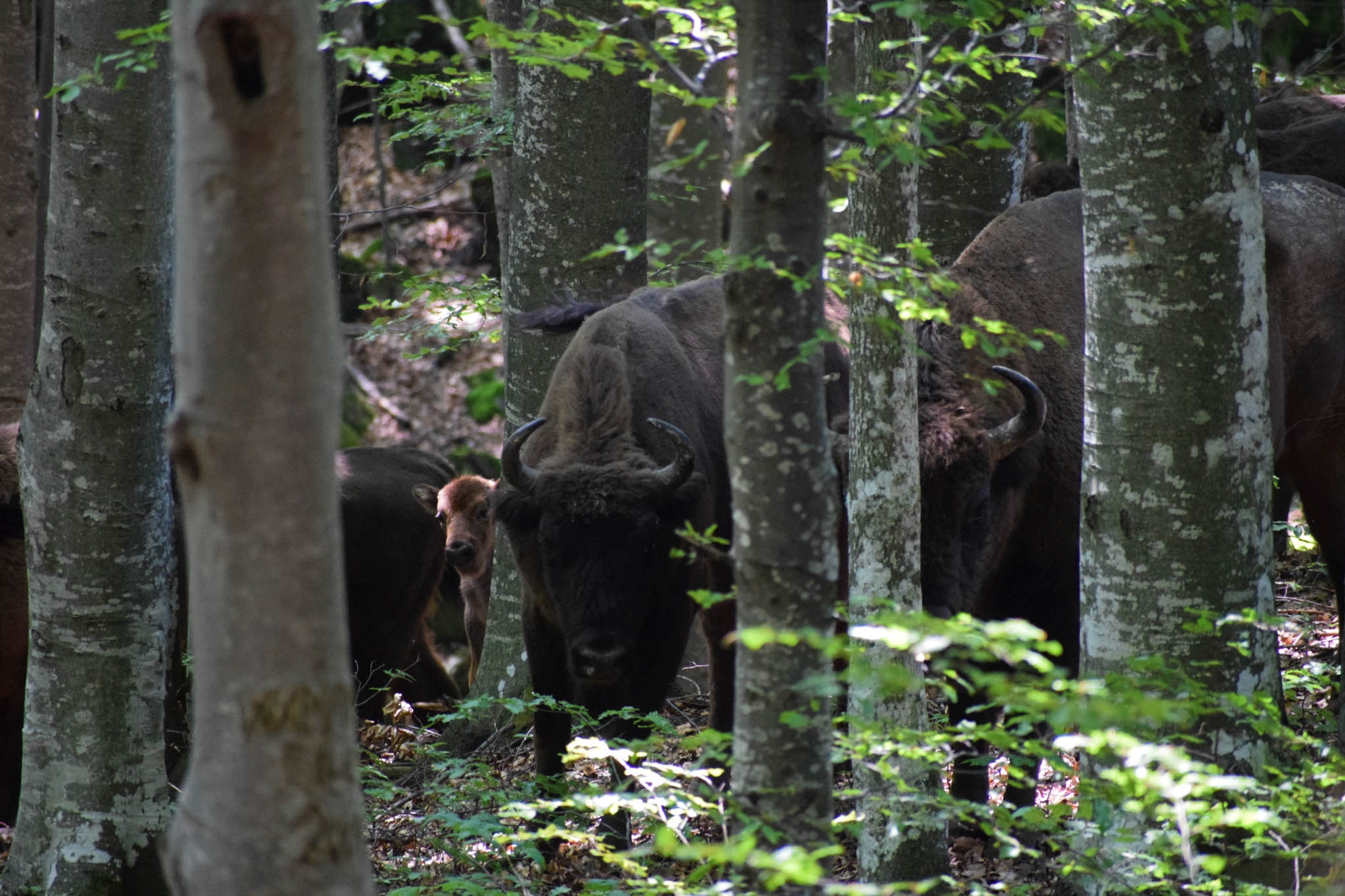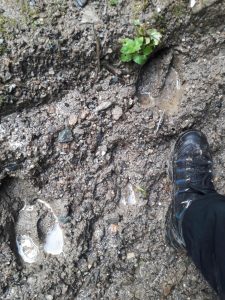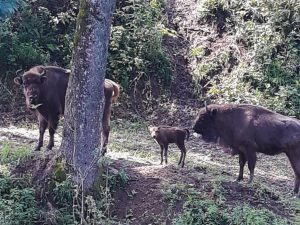Born into herds in both the Armeniș and Poiana Ruscă rewilding areas, the four healthy calves show significant progress is being made in establishing a fully wild, viable bison population in this part of Romania.

Rewilding Europe and WWF Romania are thrilled to announce the birth of four new bison calves in the Southern Carpathians rewilding areas. One calf was born into the bison group reintroduced into Poiana Ruscă, near the village of Densuș (Hunedoara county), this year. The other three were born into the free-roaming bison herds that have gradually been reintroduced into the Țarcu Mountains, near the village of Armeniș (Caraș-Severin county), since 2014. Reintroductions are now being carried in both areas as part of the European Commission-funded LIFE Bison Project, which will run until 2021.
“The arrival of these four new calves is really great news,” says Marina Drugă, WWF Romania’s LIFE Bison Project manager. “The fact that they have been born in completely wild conditions demonstrates that we are making progress toward establishing a truly wild generation of bison here. And the fact that this year we have at least three calves born free in a group of 11 mature bison, which is a good birth rate, shows once again that this area is favourable for sustaining viable bison populations.”
A short clip of the new bison calves in the acclimatisation enclosure.
The Poiana Ruscă calf was born in May in the area’s acclimatisation enclosure, shortly after the first two bison arrived here. The calf, whose mother came from the Donaumoos reserve in Germany, is in good shape, with the pair first seen together on camera traps installed by members of the rewilding team. When the gates to the rewilding enclosure (the last enclosure used in the acclimatisation process before bison are allowed to roam free), the rangers also saw them repeatedly in the forest during regular patrols.
The bison calves from the Țarcu Mountains are currently between two and eight weeks old and are also in good health. All of them have been born in the herd containing Mildred, a female from the Avesta Reserve in Sweden who arrived in the first bison translocation in 2014 (and who also gave birth to one of this year’s calves) – this group also contains two of the bison calves born last year.

The arrival of the Țarcu calves was first noted from their tracks, with the area’s bison rangers eventually spotting mothers and calves in close attendance.
“We saw all three of the calves and they are doing just fine,” says ranger Matei Miculescu. “We are organising teams with the younger trainee rangers to regularly check the location and health of the mothers and babies.”
The calves in the Țarcu Mountains have been born in total freedom – together with last year’s calves they are the first truly wild generation of bison in this area. The fact that they are wild and free gives them the best chance of surviving without human assistance.
The entire bison herd in the Țarcu Mountains, formed from several groups transported in successive years since 2014, is now stable after a difficult beginning. In the first three years they were confronted with many challenges, including harsh winters, blue tongue disease and attacks from other animals. These animals will soon be joined by a bison group translocated to the area in May 2018 from Germany, Italy and Romania. These bison are now in their final stage of acclimatisation in the rewilding enclosure, where they will spend another month before being released.
Tristian Herbert, one of the area’s young trainee rangers, is a member of the taskforce established by WWF Romania to collect more data about bison and their habitat. This will support the research and development of innovative technological tools for wildlife monitoring and data analysis.
More information about this complementary technology project, called WildAI (eye), can be found here.

“We saw around 14 bison from a distance of roughly 25 metres,” says Herbert of his first encounter with the bison and their calves. “The whole group was very calm and watched us for about fifteen minutes, showing no sign of nervousness, before slowly walking off.”
The taskforce’s first encounter with the calves was unplanned. The group was actually in the field to collect fresh faecal samples for dietary analysis and to record mobile signal and internet strength at locations where the bison come together regularly.
With wild bison hunted to extinction in Romania around 200 years ago, Rewilding Europe and WWF Romania began reintroducing bison into the country’s Southern Carpathian mountains in 2014. This became a European Union-supported LIFE-Bison project in 2016. The overally objective of the project is to establish a wild bison population that is demographically and genetically viable by reintroducing a total of 100 individuals at the Țarcu Mountains and Poiana Ruscă Natura 2000 sites.
- Read more about the LIFE Bison project here.
- Learn more about the Southern Carpathians rewilding area here.
- Visit the Rewilding Southern Carpathians Facebook page here.
- Those interested in seeing reintroduced bison in the Southern Carpathians up close should visit the European Safari Company website here.
